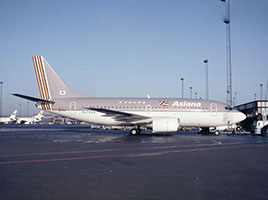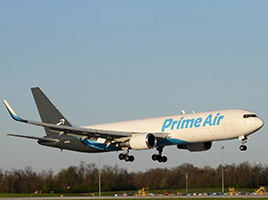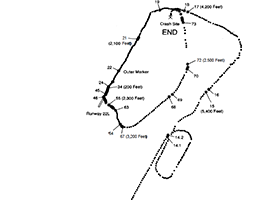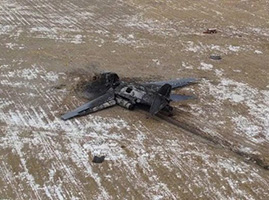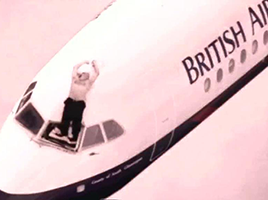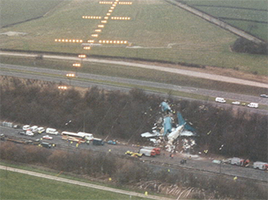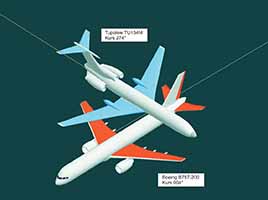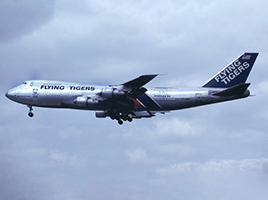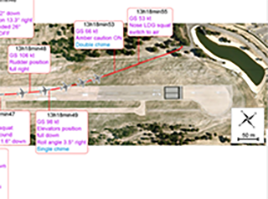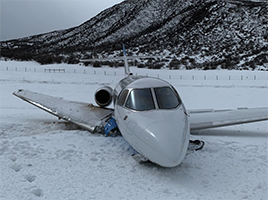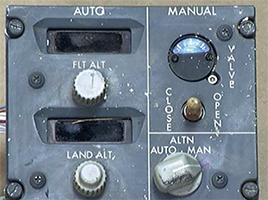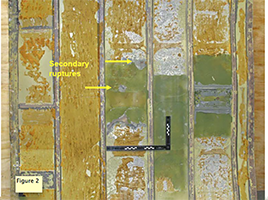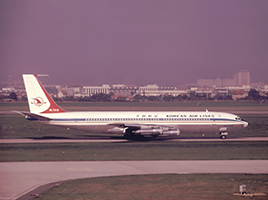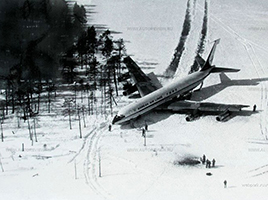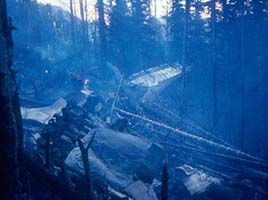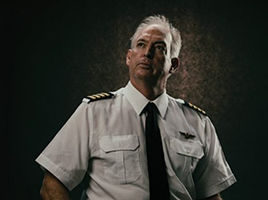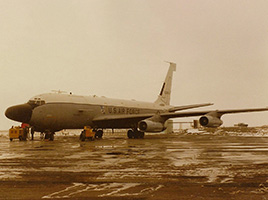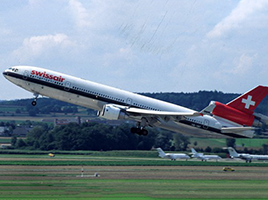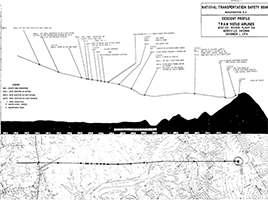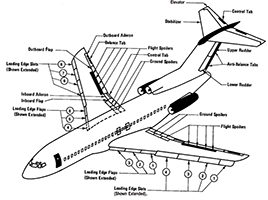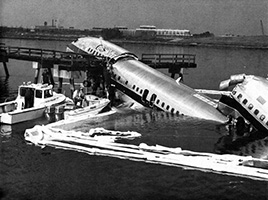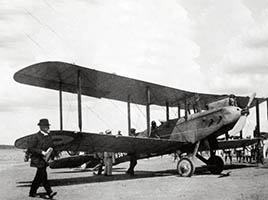A
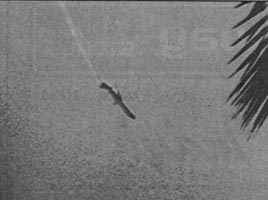
Aeromexico 498 & Piper N489F
An IFR clearance in IFR airspace is no guarantee you will not have a midair collision. The "Big Sky Theory" does not work.
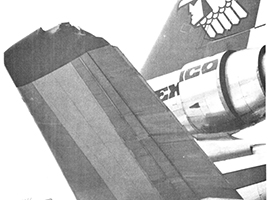
Aeromexico 945
If your autopilot does a poor job of holding speed in a climb, you may be tempted to use a constant vertical speed or angle. Be careful, that is a dangerous mode in a climb.
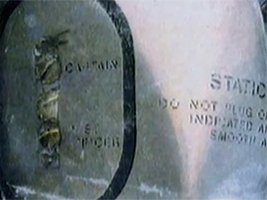
Aeroperú 603
Static ports covered in tape and a crew who didn't know how to fly without their pitot-static system.
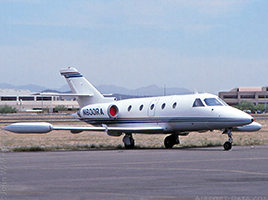
Aérospatiale SN-601 Corvette N600RA
Have you ever had to jump start a car? How about an airplane? There are a few things in aviation that should earn you a lifetime ban from aviation. This is one of them.
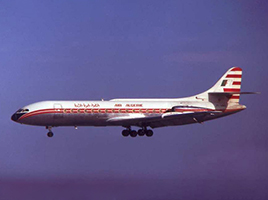
Air Algerie 73
A cabin fire in the days before we really understood that it is more important to land the airplane as soon as possible than it is to fight the fire while continuing to your destination.

Air Blue 202
After being instructed to circle from a left downwind, the captain asked the first officer to build an "ad hoc" circling approach using a right downwind. The request didn't make any sense because of the terrain and their clearance, but the first complied. Why? Because the captain had already beaten the first officer down mentally and the first officer was willing to do anything. Nobody survived.
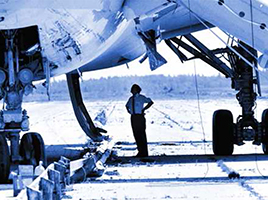
Air Canada 143
Yes, the captain glided his aircraft after it ran out of fuel. But it was he who should have made sure they had enough before they took off.
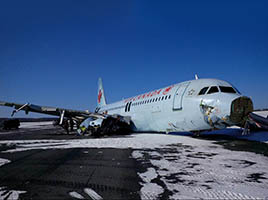
Air Canada 624
The "duck under," even when done with technology, can set you up for a big surprise when trying to identify the runway in poor visibility.
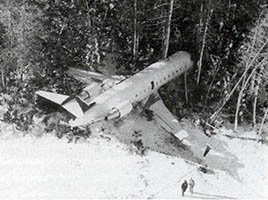
Air Canada 646
It can be tempting to disengage the autopilot early and fly the rest of the approach by hand. But if you pull the throttles to idle early and then attempt to balk the landing, engine spool up time and energy may not let you.

Air Canada 759
This could have been the worst aviation accident of all time, not just another case of a wrong surface landing attempt. After reading this case study, you should be convinced of the need to always have some kind of electronic situational awareness tool available for every approach and landing, especially those at night.
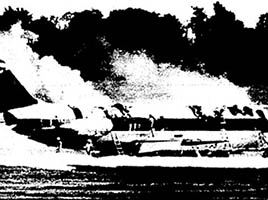
Air Canada 797
The rule with circuit breakers used to be: reset, if it pops, let it cool and try again. There's a reason we don't do that anymore and that reason begins with this accident.
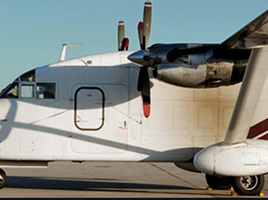
Air Cargo Carriers 1260
The captain was a poor instrument pilot and the young first officer assumed she had no choice but to put up with it. The airline paired them together so that they flew exclusively with each other. It was a recipe for disaster.
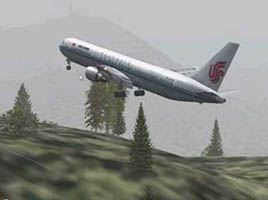
Air China 129
The captain attempted to fit his Cat D aircraft into a Cat C circle and bullied his first officer into helping. But the U.S. FAA owns some of the blame.
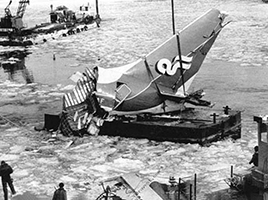
Air Florida 90
Two pilots with limited experience operating in icing conditions invent several new ways to de-ice prior to takeoff. Their outside-the-box thinking doesn't end well.
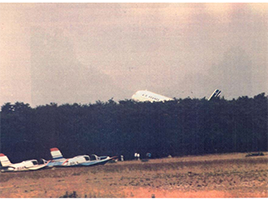
Air France 296
Flying a brand new aircraft type with a brand new flight control concept is no time to make it up as you go along during an air show. The results were tragic.

Air France 447
The aircraft lost both airspeed systems for about 30 seconds, causing the autopilot to disconnect. That was all the time one of the pilots needed to get the aircraft into a stall at 35,000 feet. The other two pilots didn't realize that 16° nose up was inappropriate for an Airbus at that altitude.

Air Illinois 710
The aircraft took off from VFR conditions headed for IFR conditions and had an electrical problem right after takeoff. The right decision was obvious, but the captain had made up his mind to press on. The first officer didn't provide any contrary advice.
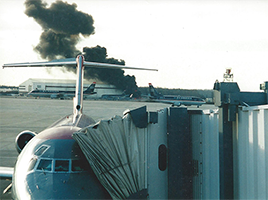
Air Midwest 5481
We aviators are responsible for lives and we pilots are used to a level of oversight to make sure we get it right. Mechanics of aircraft are also aviators and also need a level of oversight. Without that oversight, bad things can happen.
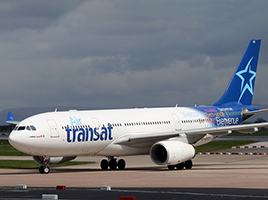
Air Transat 236
The crew ran out of fuel over the North Atlantic and successfully glided their Airbus 85 nautical miles without any injuries to the 319 people on board. The pilots are considered heroes by many. But had the pilots bothered to follow a fuel transfer checklist, they would have turned around and landed with both engines still running.
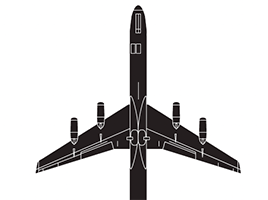
Airborne Express 827
Five years before this Functional Evaluation Flight (FEF), the company almost lost another DC-8 because the pilot did not properly execute a stall speed check and got the aircraft into a stall and then a spin. The FAA forced the company to adopt proper stall check procedures but the company's director of flight technical programs believed he knew better. They lost an airplane and a crew as a result.
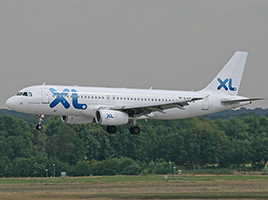
Airbus A320 D-AXLA
There are few things more dangerous than an airline crew on a non-revenue flight. If you give them a functional check flight to perform without exact procedures, things only get worse.

Airhub 4311
The crew flew a good approach, used company SOPs, and executed a go around at the correct decision altitude plus their company additive altitude of 50 feet. That additional 50 feet saved their lives. They came within 6 feet of the ground because their altimeter was off by ten. What does "off by ten" mean? A lot.
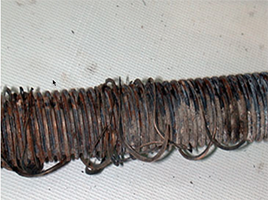
Alaska Airlines 261
The crew almost saved the day but they took their troubleshooting a step too far. Once you have a flyable airplane, find someplace to land. And land.
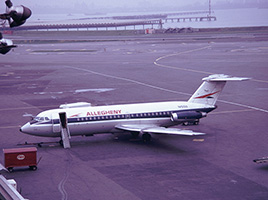
Allegheny Airlines 453
The crew didn't follow their checklists, didn't make any callouts, landed long, and destroyed an airplane. They are lucky they didn't kill anyone.

American Airlines 191
Sometimes a maintenance shortcut seems successful because nothing bad happens right away. But time and time again the bad thing takes a while to happen. And sometimes a flawed pilot procedure taught and accepted by all turns out to be flawed too.
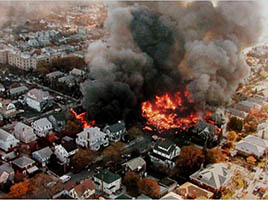
American Airlines 587
When graduating to big jets, pilots need to understand they have the ability to overstress the aircraft if they are too aggressive. That is what happened here.
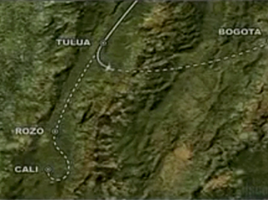
American Airlines 965
This is where much of the world learned that the latest in technology does not make up for a lack of situational awareness.
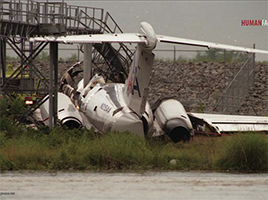
American Airlines 1420
Fatigue can make very good pilots make very bad decisions, destroying an airplane and killing some passengers along the way.

American Airlines 1572
The classic duck under and the caution: "a non-precision approach must be flown with a great deal of precision."
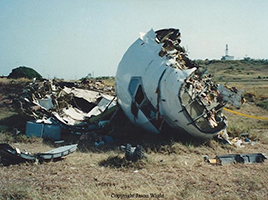
American International Airways 808
The company believed in taking their crews "right to the edge" of duty limits and the crew of AIA 808 was too exhausted to know they were about to crash an airplane.
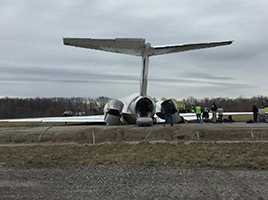
Ameristar 9363
The crew was set up with an aircraft malfunction they could not have anticipated requiring actions after V1 that are not trained, and by all rights should have killed everyone. But the crew reacted superbly and all 116 on board survived.
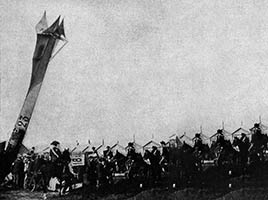
Antoinette IV & Farman III
This was the first demonstration of how poorly the "Big Sky" theory works.

Air Transport International 102
The flight engineer made a mistake in the takeoff data and the captain and first officer failed to catch the error. Do you have the "sense" to know when your numbers are wrong enough to destroy your aircraft?

Asiana Airlines 214
It appears that many pilots flying Korean airlines, such as Asiana or Korean Air, are highly stressed about landing without an ILS glideslope. Some argue that the design of the aircraft's auto throttle system owns much of the blame. I disagree.
B
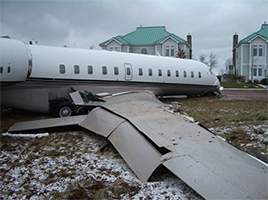
BD-700 C-GXPR
Aiming for the first inch of pavement and relying on the flare is a recipe for destroying a brand new airplane.
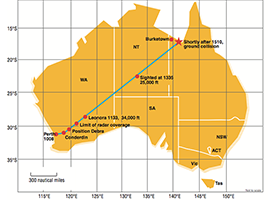
Beechcraft King Air VH-SKC
The aircraft wasn't pressurizing and the pilot and passengers didn't detect that. The reasons behind this are unclear, but had the pilot checked his cabin altitude during the climb, he might have realized the problem before it was too late.
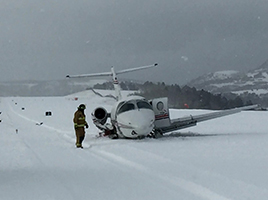
Beechjet 400A XA-MEX
Is operating out of an airport without a tower safe? How about doing that at night? And after heavy snowfall? Safe or not, there is definitely increased risk.

Birgenair 301
If a pitot tube is blocked on the ground and you takeoff, what indications will you see on the indicator? Knowing the answer can save you, your passengers, and your aircraft.
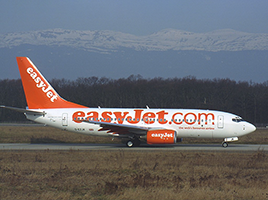
Boeing 737 G-EZJK
If called upon to do a functional check flight, it pays to have written procedures. But even with those, you need to understand the reasoning for everything you have to do.
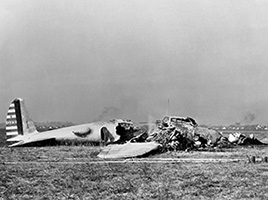
Boeing Model 299
The idea of using a checklist as we know it today started after this well qualified crew forgot to release a gust lock prior to takeoff. If you've not heard of the Boeing Model 299, this accident almost doomed the aircraft to never being produced. But adding a checklist made the Boeing B-17 possible.

British Airways 9
When this crew ran into a volcanic cloud they didn't have a lot of previous knowledge about what to do, but that wasn't' their fault: nobody did. Fortunately, they did everything right and we are the beneficiaries.
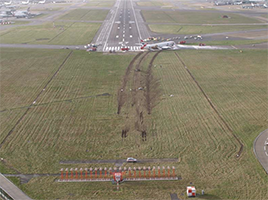
British Airways 38
The pilots of British Airways Flight 38 did well to get the airplane on the ground with only one serious injury to its occupants and there is little to critique about their performance. It does offer some food for thought if your aircraft has a heated fuel return system.
C
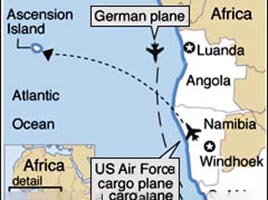
C-141 65-9405 & Luftwaffe 74
Two aircraft relying on "broadcast in the blind" procedures and an air traffic control system that barely deserved the name. I am surprised we didn't get more of this back then over Africa.
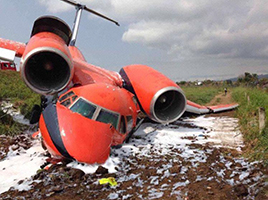
Cavok 7087
It is hard to see that the crew did anything right: reject above V1, failure to deploy speed brakes and spoilers, no takeoff briefing, and poor crew coordination. They would have been better off in the air but they could have stopped if they followed procedures.
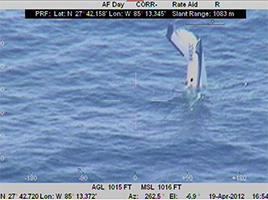
Cessna 421 N48DL
A poorly qualified pilot took his poorly equipped aircraft to 27,000 feet and failed to notice the aircraft wasn't pressurizing. The poorly motivated FAA and NTSB couldn't be bothered to investigate and the aircraft and pilot have been interned forever to the sea.
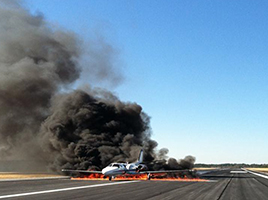
Cessna 550 N6763L
Can any aviation accident be chalked up to pure bad luck? What if a deer jumps in front of your aircraft just as you are landing? Bad luck? It happens to motor vehicles all the time. Nothing to be done about it? I am not so sure about that.
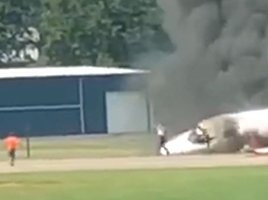
Cessna 680 N8JR
An unstable approach, bounced landing, failure to deploy the speedbrakes after landing and then an attempt to go around after the thrust reversers were deployed. And they were very lucky.

Cessna CJ2+ N380CR
Many autopilots that promise to maintain a set speed during a climb don't do that very smoothly and that might be a problem. If you elect to climb at a constant vertical speed or flight path angle instead, and if you don't watch your climb performance very careful, you will definitely have a problem.

Cessna CJ3 N528DV
A gear up landing is rarely only about the pilot making a mistake. If that were the case, the fix would be easy: just don't forget the gear. But if you dive in deeper, you can find why the pilot made the mistake and figure out how to really keep it from happening to you.

Challenger 300 N300ER
With less than 5 months in type, the crew thought they knew enough to takeoff with a problem and then when presented with three amber CAS messages, selected a checklist unrelated to any of the three. A passenger lost her life as a result.

Challenger 600 N370V
The crew asked for the fuel to be "topped off," failing to understand that their aircraft's CG moves forward at the higher range of fuel and in circumstances like they found themselves in, takeoff becomes impossible.

Challenger 604 C-FTBZ
If a cadre of pilots in a small organization all start doing something wrong, the something wrong becomes normal. They tried to blame this accident on fuel migration but it wasn't. It was very poor pilot technique.
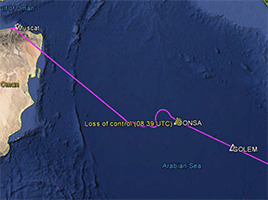
Challenger 604 D-AMSC
If you are sharing the airspace with an Airbus A380, it is in your best interest to fly above it or to know precisely where it is and ensure you are someplace else. The wake turbulence off an A380 is to be avoided at all costs.
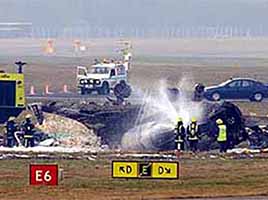
Challenger 604 N90AG
If you believe the wing of our modern jet stalls from the tip to the root you are probably wrong. If you think a little frost on the wing is nothing to worry about, you are definitely wrong. These pilots were dead wrong.
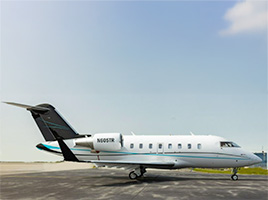
Challenger 605 N605TR
Yet another circling accident of a business jet, and as is often true in these cases, these pilots were killed by their training.
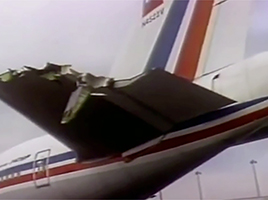
China Airlines 006
The captain failed to keep the aircraft in coordinated flight while dealing with a failed engine at high altitude. When the aircraft started to lose speed, he fixated on the speed and ignored the growing back angle. After he lost control of the aircraft he failed to recover from the unusual attitude until he popped out of the clouds around 9,000 feet.
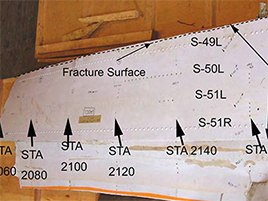
China Airlines 611
The aircraft suffered a tail strike that was improperly repaired and never inspected as required. The repair lasted over two decades, until it didn't. Just because a short cut doesn't result in an immediate failure doesn't mean the short cut was successful.
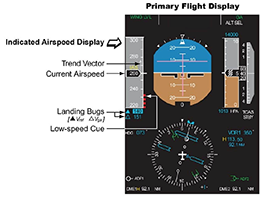
Colgan Air 3407
Two pilots were not paying enough attention during an approach and then failed to understand why airplanes stall or how to recover from a stall. Fifty people lost their lives as a result.
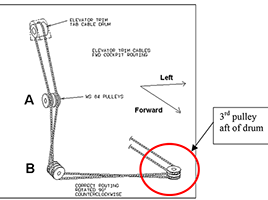
Colgan Air 9446
Mechanics took a short cut when repairing a binding elevator trim tab and inspectors didn't have a good test procedure to verify the work was done correctly. The pilots skipped a few checks that would have caught the problem. They discovered the problem after takeoff and then it was too late.
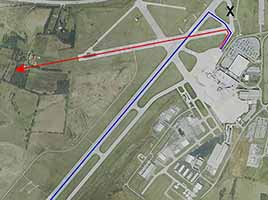
Comair 5191
The pilots lined up on the wrong runway and the tower controller didn't notice. Had they noticed they were off their correctly set heading bugs, they would have known to abort the takeoff before it started.
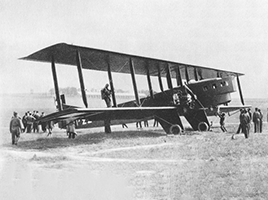
Compagnie des Grands & Daimler Hire Limited
IFR = "I Follow Roads" was really how it was done at first. But the British drove on the left and the French on the right. So in opposite directions, they were "beak to beak."
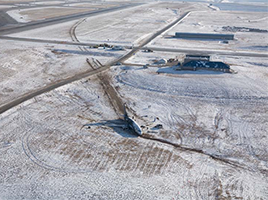
Continental Airlines 1404
The captain initially applied too much crosswind rudder during takeoff causing a deviation downwind, then he took out too much rudder. No doubt he was surprised when they ended up off the runway.

Corporate Airlines 5966
These pilots were unprofessional in just about every respect and it is a crime that they took the lives of 13 of their 15 passengers with them. But they do serve as an example for others on how not to behave. Minutes before crashing their perfectly good aircraft one said that too many pilots "take themselves way to serious, in this job." We call those kinds of pilots professionals.
D

Delta Air Lines 191
By the time this accident happened in 1985, we had learned a lot since Eastern Air Lines 66 in 1975. But one of the lessons bears repeating now that we all understand just how dangerous windshear can be: just because the aircraft in front of you made it in okay doesn't mean you will.
E
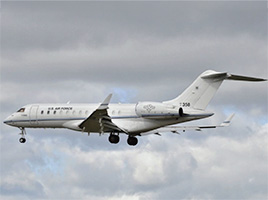
E-11A 11-9358
A loud bang, vibrations that shake the airplane enough to make you think the structural integrity of the aircraft is in doubt, and no clear indication on the instruments at that moment about which engine failed. What do you do? The right answer was to wait, but in the presssure of the moment, this crew didn't do that.
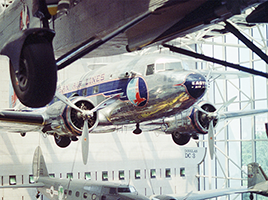
Eastern Air lines 14
The pilot made several bad decisions, ending with a decision to plant his aircraft halfway down the runway with a tailwind. But it all started with the company's alternate airport selection which was made with "insufficient care."
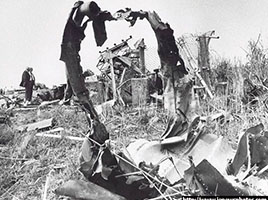
Eastern Air lines 66
This was the windshear accident that got everyone's attention and out of it we got better technology and techniques.
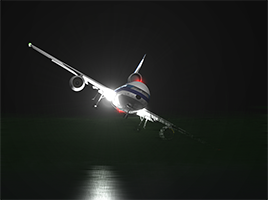
Eastern Air Lines 401
Everyone should intuitively understand that if one or more pilots are needed for troubleshooting that at least one pilot should be devoted to flying the airplane. The trouble is that we pilots want to be involved with the troubleshooting and overestimate our ability to multitask.
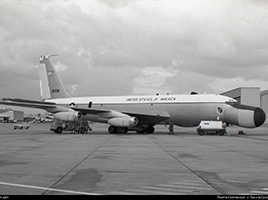
EC-135N 61-0328
Would having your spouse in the jumpseat impact the way you fly? How about if you had a sudden emergency?
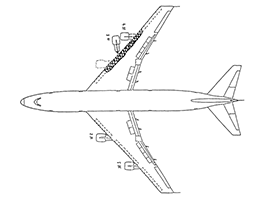
Elal 1862
The crew was in an extremely difficult situation and in these situations there is a subconscious pressure to get the airplane on the ground. The report says control of the airplane may have been "virtually impossible." I'm not so sure.
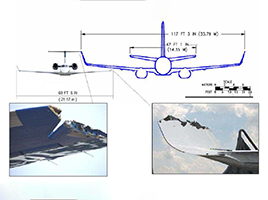
EMB-135BJ N600XL & GOL 19078
Lost communications procedures in the U.S. are an exception to the ICAO standard; if you are flying outside the U.S., you need to learn how to deal with lost communications. Not knowing can be deadly.
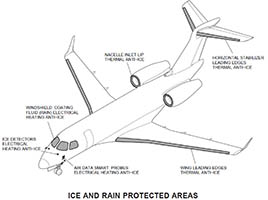
Embraer EMB-550 Legacy 500 RA-02788
With many aircraft where the computers have partial or complete control of the flight control systems, the pilot is flying at the pleasure of the electrons. The pilot must understand the boundaries between his or her control and that of the aircraft. Mismanagement of a system that doesn't appear to have anything to do with flight controls could have dire consequences.
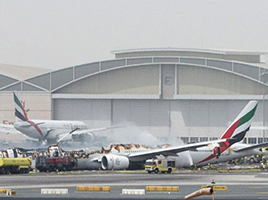
Emirates 521
A balked landing from the flare requires a great deal of attention and is a lot more complicated than a simple missed approach or go around from decision altitude. This crew did almost everything right. What they got wrong destroyed an aircraft.
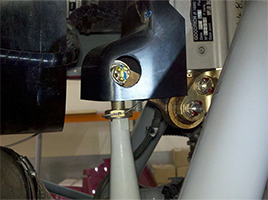
Eurocopter AS350-B2 N37SH
Fatigue and extended duty cycles can be a recipe for disaster. We know that. But this applies to mechanics as well as pilots.
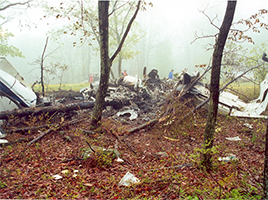
Executive Airlines N16EJ
Fuel planning begins with the initial fuel order and continues from there. There is math involved in the initial order and there are lots of opportunities to make mistakes. If you have more than just one pilot doing the fuel management, it helps to have lots of eyes on the problem. Mistakes are not impossible with a good back up, but they are less likely.
F
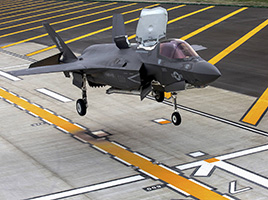
F-35 16-9591
The pilot thought the aircraft was out of control, so he ejected. The lessons learned apply to us all: you need to be comfortable flying with your Standby Flight Displays.
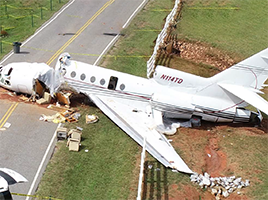
Falcon 50 N114TD
Two unqualified pilots are hired to fly an older Falcon and crash. What caused the crash? The answer may surprise you.

Falcon 2000 CS-DFE
We quite often task line crews to conduct functional check flights, even when they are untrained and we don't have adequate procedures in place.
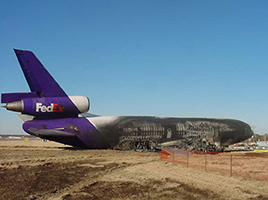
Federal Express 647
The pilot correctly "decrabbed" the aircraft prior to landing but somewhere in the flare relaxed crosswind controls, causing the DC-10 to touchdown in a crab. The aircraft was destroyed. Not all airplanes land in a crab. In fact, many large aircraft do not!
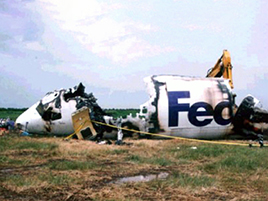
Federal Express 1478
Otherwise good pilots were fatigued, leading to an approach that was dragged in. The captain called the approach "stable" even though the PAPI showed red over red. The first officer, as it turned out, had a red/green color vision deficiency. But the captain and flight engineer would have seen the red over red.
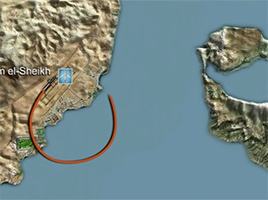
Flash Airlines 604
Sometimes the captain's reputation is so revered that no one in the cockpit expects mistakes or is prepared to challenge those mistakes. It is a recipe for crashing a perfectly good aircraft.
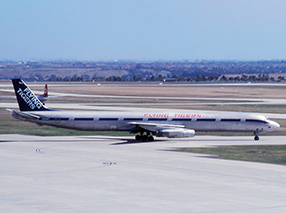
Flying Tiger Line 45
Flying through rain on approach and then popping out of the weather and going from dark to bright should make it easier to spot the runway, right? How long does it take for your eyes to adjust from dark to bright? For most, it is 6 to 8 seconds. Is that enough time? Maybe not. It is another reason strict adherance to SOPs can be a life saver.
G
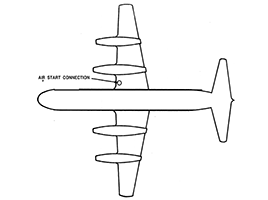
Galaxy Airlines 201
The captain's reputation preceded him and the rest of the crew was ready to defer to his experience. The captain became a crew of one and the crew allowed it to happen.

Germanwings 4U9525
This incident sheds a light on the mental health issue of a single pilot, at first glance. But it really brings into focus the need to take care of ourselves both mentally and physically.
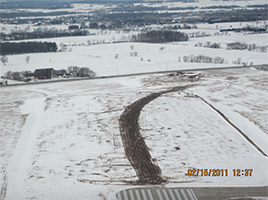
Gulfstream G550 N535GA
If you are on short final, fully configured, and the aircraft warning systems tell you something is wrong, do you (a) go around, or (b) land? What if the problem is hydraulic?
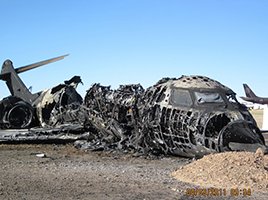
Gulfstream G650 N652GD
Aircraft manufacturers are in the business of selling aircraft and there are times an aircraft's performance numbers are wishful thinking. The G650 invented a new class in speed, range, and comfort. The aircraft has become very successful. But they had to reexamine the promised numbers early on.
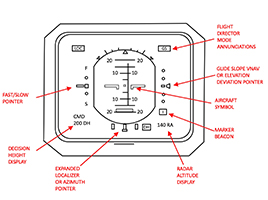
Gulfstream GIII N85VT
Many of us have "Tune, Identify, Monitor" beaten into us as instrument student pilots, but after a while we just assume once the frequency is in, we are done. Not so.
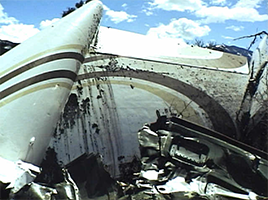
Gulfstream GIII N303GA
Having a passenger in the jump seat for the approach and landing is rarely a good idea. When that passenger has already made it clear that he needs to get there with no other options; well that is about as bad as it gets.
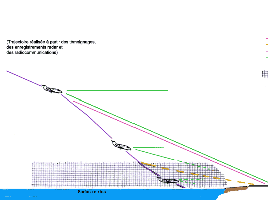
Gulfstream GIII VP-BLN
The pilot wanted to fly a "flatter" approach over a lake and ended up flying into the lake. The 4.6° ILS made this tempting. The glare of the sun and the mist off the water made this very difficult. The crew's lack of callouts made the accident almost inevitable.
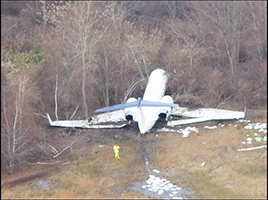
Gulfstream GIV G-GMAC
We quite often have multiple ways of doing things and the manufacturer leaves that up to us. But some ways are better than others; we shouldn't be stuck with how we've always done something when a better way presents itself.
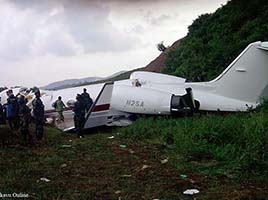
Gulfstream GIV N2SA
Landing 4,000 feet long on a 6,000 foot long runway rarely works, especially for a Gulfstream IV. The reporting is scant, but given those facts, the causes are easy to determine.
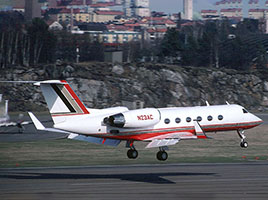
Gulfstream GIV N23AC
The NTSB missed an important factor in this accident: the pilot tended to fly his 70,000 lb. Gulfstream like a light aircraft, unloading the nosegear during takeoff. Don't do that.
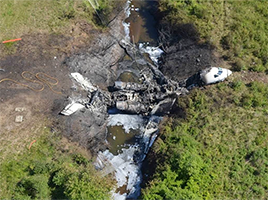
Gulfstream GIV N121JM
This is a complete case study of what can happen when two pilots become intentionally and habitually non-compliant. They are the poster children for the normalization of deviance. It is critical to realize these pilots were at some point good. But they day they died, they were not.
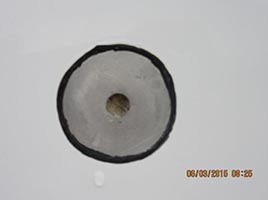
Gulfstream GIV N450KK
This accident took place back in April of 2015 and offered a chance for pilots to see just how important a thorough preflight is. But it took the NTSB over two years to write the accident report and they got it terribly wrong. If you believe the report, we are all at the mercy of mud daubers.
H
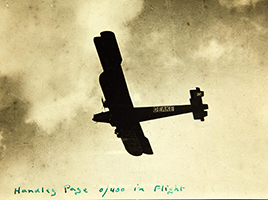
Handley Page O/400 G-EAKE
An air race back in 1920 provides a rare glimpse into an era where we aviators took a lot of risks in an effort to promote air travel. The result, of course, is an era of aviation safety they could only dream of, fifty years ago.
J
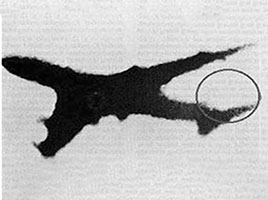
Japan Air Lines 123
The pilots did about as well as they could have, given the circumstances and knowledge available to them. The real lessons here are in aircraft design and proper maintenance procedure.

Japan Air Lines 8054
All five persons on this cargo DC-8 died in the crash right after takeoff. The aircraft may have had some icing on the wings caused by very cold fuel that would not have been present during preflight inspections. But the aircraft should have been flyable. So what caused the crash? Alcohol, cultural norms, and Crew Resource Management.
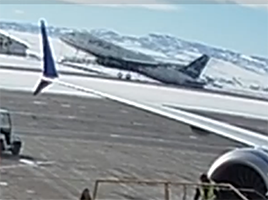
JetBlue 1748
Two pilots on the ground situationally unaware of the situation in the air at a non-towered airport, as well as a pilot in the air seemingly unable to think on his feet and simply break out of the pattern. But there's more: the JetBlue pilots seem unaware of the takeoff abort option. Everyone involved got very lucky.
K

Kalita 207
The crew didn't line up correctly and ended up with "runway behind them." They panicked after a survivable bird strike and initiated an abort 12 knots after V1. They didn't employ all their deceleration devices. Finally, the company did not allow the first officer or flight engineer to call for the abort.
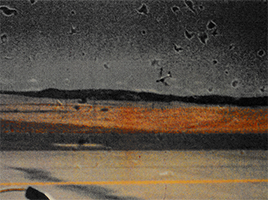
KC-135A 59-1443
This instructor pilot was put into an almost impossible situation, required to teach a technique to stop Dutch Roll in an aircraft where Dutch Roll was quite a problem. The lesson for us is this: do not allow the student to exceed your capabilities.
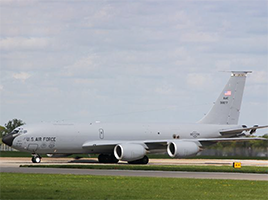
KC-135R 63-8877
The Air Force says the pilot failed to correct the aircraft's dutch roll following a yaw damper failure. I say the Air Force failed to train the pilot to recognize the dutch roll in the first place.
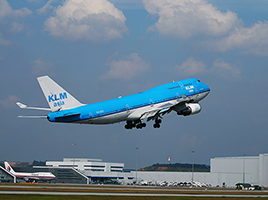
KLM 867
Volcanic ash encounters were not well understood until the Boeing 747 offered the range and altitude to be at risk. This encounter took place seven years after the first well documented case but the information was still not widely distributed. (It is now!)
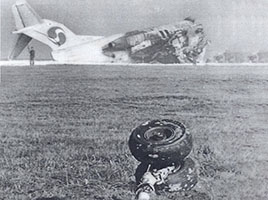
Korean Air 221
Available information says an engine failed due to ice ingestion during takeoff. These reports fail to mention if the aircraft was de-iced and why an engine failure on takeoff resulted in a failure to takeoff or stop on the runway.

Korean Air 769
Both pilots thought they saw two runways though there was only one. The captain said, "I'll make a landing there." "There" ended up being a taxiway.
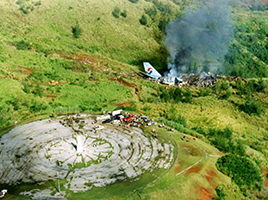
Korean Air 801
The captain was stressed about flying an ILS without a glide slope and used his autopilot to step down to the next altitude on the approach before the previous altitude was captured. The rest of the flight crew was reluctant to challenge the captain and the result was inevitable: CFIT.
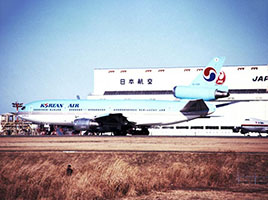
Korean Air 803
The ILS was out of service, the weather was below minimums, and the previous aircraft diverted. Of course they shot the approach.
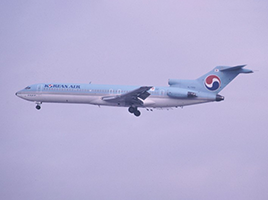
Korean Air 852
Here are some ideas: let's not run the checklist and when the gear unsafe warning horn sounds, let's pull the warning horn circuit breaker. What can to wrong?
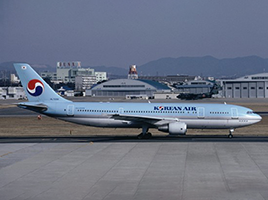
Korean Air 2033
One pilot, the Korean first officer, decided they had to go around. The other pilot, the Canadian captain, decided they had to land. So they had a fight and ended up destroying the aircraft. Miraculously, nobody was killed.
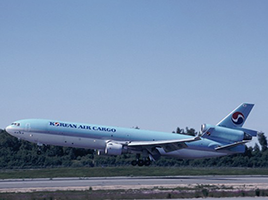
Korean Air 6316
The captain thought the clearance was to an altitude in feet, the first officer understood the correct clearance was in meters. When the captain finally understood, his reaction was to plunge the aircraft into a unrecoverable dive. They destroyed another aircraft.
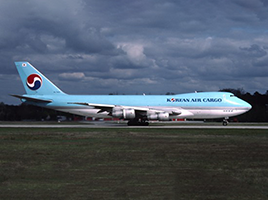
Korean Air 8509
The captain was a retired Korean Air Force colonel who could not be hired as anything less than a captain because of his social status. The crew dared not challenge him and when his ADI froze he flew them into the ground.
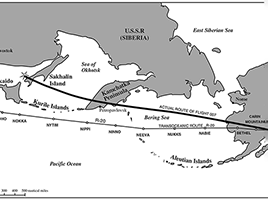
Korean Air Lines 007
The airliner wasn't where it was supposed to be and a trigger happy Russian pilot shot it down. Why was the airplane in the wrong place at the wrong time? Conspiracy theories abound, but I think it was poor INS programming and cockpit discipline.
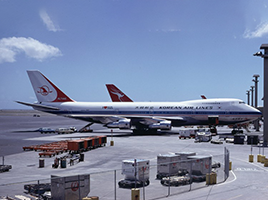
Korean Air Lines 015
An apparent duck under in patchy fog. The weather wasn't great, but it was certainly easily within the capabilities of a competent crew.
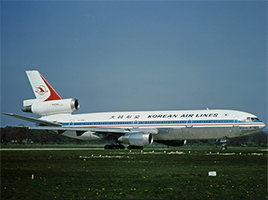
Korean Air Lines 084
The captain got lost during a low visibility taxi, ended up taking off on the wrong runway where a small aircraft was awaiting to takeoff in the opposite direction. The Korean Air Line jet collided with the small aircraft. Both aircraft were destroyed but there were no fatalities.
L
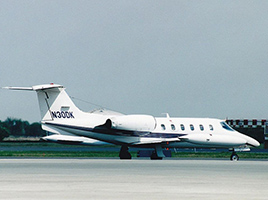
Learjet N30DK
Questions about what does "radar contact" really mean and who is really responsible for terrain clearance.

Learjet N47BA
The operator failed to service the oxygen for nearly two months and the captain failed to check it. The aircraft outclimbed the pressurization system and everyone onboard passed out. The NTSB says those things happened for "unknown reasons."
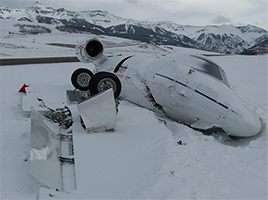
Learjet N279AJ
Both pilots didn't have a problem with flying a Cat C aircraft on a instrument approach where Cat C was "NA" and then the PIC in the right seat, pressured the SIC in the left seat to do an unplanned circling approach. They missed the runway by 20 feet and destroyed their aircraft.

Learjet N452DA
If you read the NTSB report, two poorly qualified pilots didn't know how to circle properly. But if you have been formally trained to circle by a training vendor trying to satisfy FAA requirements, you were set up to fail like these pilots.
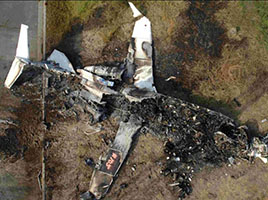
Learjet N999LJ
Underinflated tires led to the events in this crash. A poor design in the thrust reverser made things even more difficult. But it could all have been prevented by better CRM and abort procedures.

Lion Air 610
The pilots were set up by a poor aircraft design, shoddy maintenance, and inept training. But they still had what they needed to survive had the followed known procedures. In the end Boeing was embarrased and we hope learned a valuable lesson. Too bad so many people had to die to teach them that lesson.
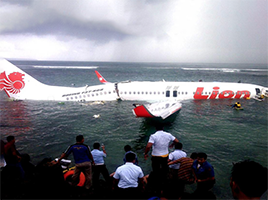
Lion Air 904
The pilot began his descent without any electronic guidance and followed that descent right into the water. The passengers were fortunate that they ended up 20 meters from shore. The aircraft was destroyed but nobody was killed.
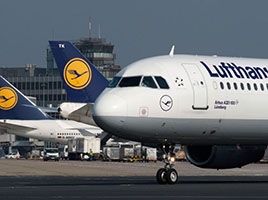
Lufthansa Papa Whiskey
Some maintenance confusion led to improper wiring in the aircraft's fly by wire system and the subsequent checks did not require sidestick movement correspond to the correct flight control movement. The captain's ailerons, in effect, were wire backwards. The first officer's ailerons worked. The captain diagnosed the problem and transferred control, just seconds after takeoff.
M

Malaysia Airlines MH17
A Malaysia Airlines Boeing 777 was shot down over the Ukraine apparently without warning. Really? There was a cryptic NOTAM that caused British Airways, Air France, Cathay, and Air Berlin to route around the area. Meanwhile Lufthansa, KLM, Malaysian, United, and Fedex decided to take their chances. All 298 on board were killed.
N
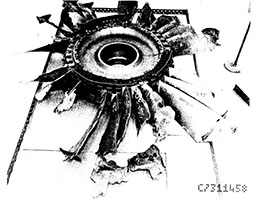
National Airlines 27
"I wonder what would happen if . . ." are portents of something bad about to happen. We often think that our aircraft are ours to learn from (true) and experiment with (false). If you cannot predict with absolute certainty the reaction to something you are about to do in an airplane, you might want to save the action for the simulator.

Northwest Airlines 255
The crew failed to use the checklist and failed to set their flaps prior to takeoff. The takeoff configuration warning system didn't work. But the investigation looked at the crew's total performance and found they were less than professional and all but one onboard died as a result.

Northwest Airlines 1482 and 299
A captain returning from a six year absence was only too happy to cede his authority to a first officer who was happy to take it. Another crew willing to takeoff below minimums because tower called the mins lower than they were. A tower controller who decided he didn't need to warn the airplane on takeoff roll that there was another airplane lost on a ruwnay. In the words on an NTSB investigator: "There are really just no heroes in this."
O
P

Pakistan International Airlines 740
The aircraft was airborne for 17 minutes after the fire was detected. That was three minutes too long.

Pan Am 001
There is very little available about this accident, other than that the pilots set a QFE of 29.93 when they should have set a QNH of 0.993 mb, leaving them 360 feet below the MDA.
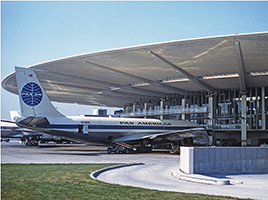
Pan Am 115
The accident report places the blame for this incident on the copilot and the praise for the recovery on the captain and flight engineer. That is all probably justified, but there isn't enough detail in the report to be sure. But it is a good review of CRM principles, good a bad.
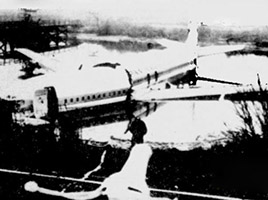
Pan Am 212
The captain went high on glide path and landed long. I wrote that there must have been more to it than that. Once of the passengers provided the rest of the story.

Pan Am 217
It appears yet another Pan Am Boeing 707 pilot simply flew the aircraft into the ocean. Just as importantly, the crew let him do it.
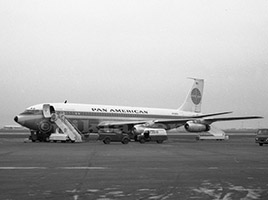
Pan Am 292
The pilots appeared to forget they were flying under instrument flight rules because they could see the ocean and various islands below them. They neglected minimum safe altitudes without being sure of their position and crashed into a mountain on an island southwest of their intended island.

Pan Am 759
The NTSB concluded that the pilot's decision to takeoff was reasonable and placed the blame of the crash, which killed everyone on board, on the microburst itself. This was in 1982, seven years after Eastern Airlines 66. We have learned much since then.
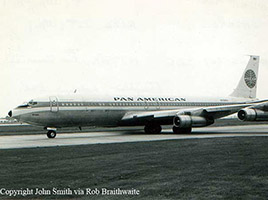
Pan Am 799
Another incident of poor cockpit procedure led. This time it involved the copilot lowering the flaps for takeoff, the captain raising them without announcing the fact, and the whole crew consumed with departure timing while nobody notice the flaps were up for takeoff.
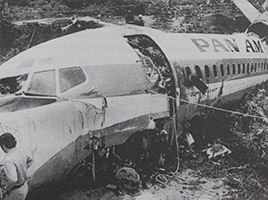
Pan Am 806
Some windshear and a "black hole" approach that could have been saved by better instrument techniques and Crew Resource Management. The result, as Robert Gandt put it, was that "Pan Am was littering the islands of the Pacific with the hulks of Boeing jetliners."
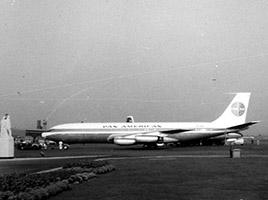
Pan Am 812
The NTSB says the crash was caused by a premature turn. No, the crash was caused by an airline's culture that (a) permitted the captain to fly with inadequate training and oversight (which led him to the premature turn), and (b) discouraged cockpit crewmembers from actively watching the captain for these kinds of mistakes.
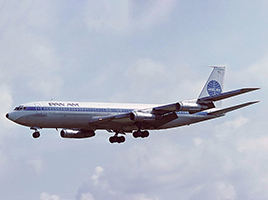
Pan Am 816
Accident investigators were unable to explain how the captain experienced spatial disorientation and crashed the airliner. In hindsight it was obvious: the airline allowed its captains to fly without oversight and the skill level of those captains atrophied as a result.
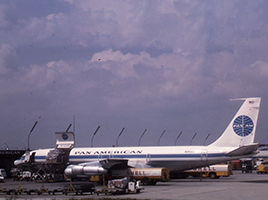
Pan Am 6005
It seems the captain was always one step ahead in the approach's altitude profile, which is never a good place to be. But why didn't the crew make things right? We know more about the captain than is in the accident report. It explains all.
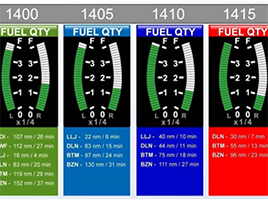
PC-12 N128CM
At what point does a worsening fuel imbalance require an emergency landing? At what point does a manufacturer's warning to add icing inhibitor become imperative? The trouble with going a little beyond your limitations is that a little can become a lot. And a lot isn't good.
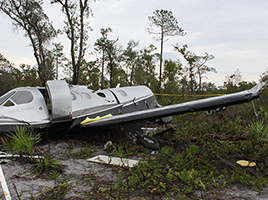
PC-12 N950KA
Before purchasing the airplane about 5 weeks earlier, the pilot had not logged any time as pilot-in-command in a turbopropeller-equipped airplane and had not logged any actual instrument flight time in the previous 7 years 4 months. While trying to circumvent some weather at 26,000 feet, he lost control of the aircraft. Just because he could afford the aircraft didn't mean he could fly it.

Pinnacle Airlines 3701
Two young pilots flying a regional jet with no passengers or adult supervision. What can go wrong? The biggest problem facing many young pilots is they don't know what they don't know. That can be fatal.
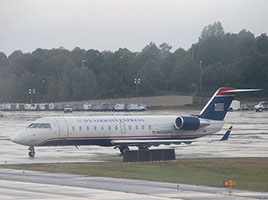
PSA Airlines 2495
This crew was carrying on an animated discussion of non-flying matters while failing to properly configure the airplane for takeoff, the captain noticed the improperly set flaps just prior to V1, attempted to set them, and then initiated an abort above V1. The only reason they got away without hurting anyone was the Engineered Materials Arresting Systems (EMAS).
S
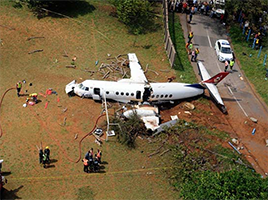
SA Airlink 8911
This engine failure could have been survived had the captain applied proper stick and rudder inputs and simply left the failed engine alone. Why do some pilots with adequate simulator training records do so poorly in aircraft? I think it may be a form of panic.
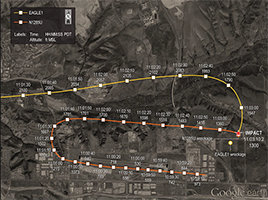
Sabreliner N442RM & Cessna N1285U
When a VFR pattern gets busy, it can tax the best air traffic controller and pilot. Everyone needs a huge dose of situational awareness and caution. When your SA breaks down, it might be time to land, pick up an IFR clearance, or simply go someplace else.
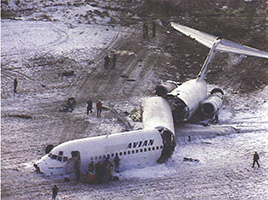
Scandinavian Airlines System 751
The ground crew wasn't trained to look for clear ice following de-ice procedures and the flight crew wasn't trained to deal with compressor stalls. An SAS captain in the cabin came forward to help and talked the crew through effectively on how to crash land their aircraft. There were no fatalities.
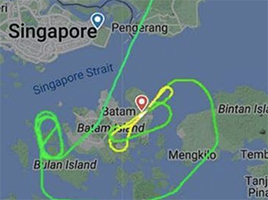
Singapore Airlines 319
When you faced with diverting from your planned destination to an alternate, it is tempting to hang around for "one more" approach or holding pattern. Landing at an alternate complicates life, and who wants that? But we are usually better off setting a "bingo" fuel and sticking to it.
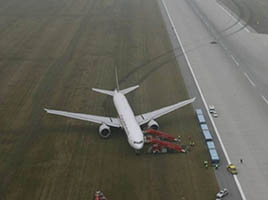
Singapore Airlines 327
When is the ILS critical area protected? This is a critical consideration when flying to minimums and even more so when using autoland. The answer, unfortunately, is not standard around the world.
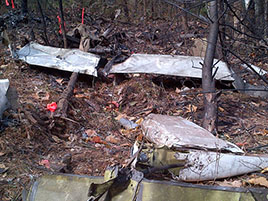
Socata TBM 700N C-FBKK
A lot of odd things happened here. The pilot was the sole occupant but he sat in the right seat where checking the pressurization and oxygen systems would be more difficult and he couldn't use the autopilot. The aircraft failed to pressurize and the pilot lost control of the aircraft for "undetermined reasons."
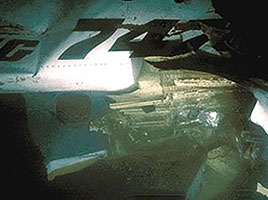
South African Airways 295
The aircraft crashed 19 minutes after the first report of fire. They might have survived had they placed a priority on getting the aircraft on the ground as soon as possible.
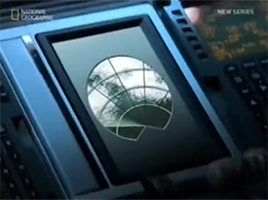
Southern Airways 242
Most instrument pilots these days understand that a "hole" on a radar scope is signs of trouble, but in 1977 the pilots of this DC-9 saw it as salvation. We pilots and air traffic controllers took away many lessons from this accident.
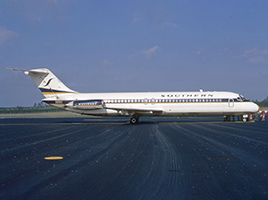
Southern Airways 932
A case study with a personal touch. Ivan's take: “It takes a lot of precision to fly a non-precision instrument approach.” That is a lesson still worth remembering, sharing . . . and adhering to.
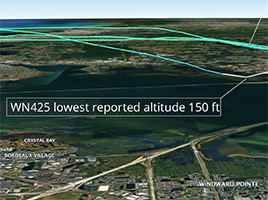
Southwest Airlines - ASAP!
The year 2024 was not a good one for Southwest Airlines, but they got away with it unscathed. Four aircraft came very close to crashing, killing all onboard as well as many on the ground. In each case, the FAA said they would investigate but after the initial statement, we've not heard a word. I suspect the FAA pawned off the investigation to the airlines Aviation Safety Action Program (ASAP), and that's the last we'll ever hear of it. The fox are guarding the henhouse.

Southwest Airlines 345
The captain noticed the flaps were not set below stable approach height and simply selected the flaps rather than go around, then the captain decided the first officer wasn't aimed for the touchdown zone and took control of the aircraft . . . at 27 feet. Things did not end well.
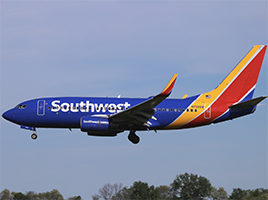
Southwest Airlines 728
As pilots we live in a world of numbers, some of us willingly, others not so much. When our safety margins get down to the small numbers, it is time for us to become skeptical and think about a Plan B. If you stick with Plan A, everything has to go perfectly. And that rarely happens.

Southwest Airlines 1248
These pilots didn't deploy their reverse thrust in a timely manner and didn't take advantage of their autobrake system well enough to use it to its full advantage. They failed to stop on the runway as a result.
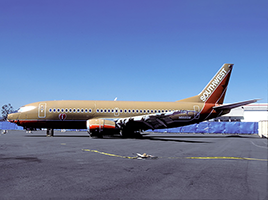
Southwest Airlines 1455
We get so used to salvaging rushed approaches that the line between what we can do and what is beyond the realm of possible becomes blurred. This crew had multiple opportunities to go around, but the thought never occurred to them.
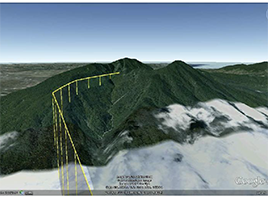
Sukhoi RRJ-95B
Two highly qualified Russian test pilots with huge resumes flew a high tech jet into a mountain. They displayed poor situational awareness and a poor understanding of their cockpit avionics. The lesson: just because you are good at one thing (test flying Russian fighters) doesn't automatically qualify you to fly something else (a passenger jet).
T

T-38 70-1956
A general officer in the front seat determined to put on a show in front of adoring junior officers. An instructor pilot in the back seat already warned not to touch the stick. In the end, the general killed himself and the instructor. There are many lessons here.
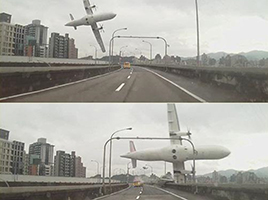
Transasia 235
Simulator performance is not always a reliable indicator of how pilots will do in the real world, especially for moments that can generate panic. This case is notable because the crew had all the tools they needed to get it right, and when they got it wrong, it was captured on video.
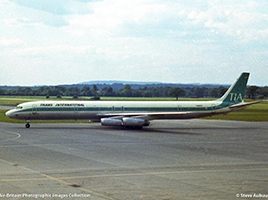
Trans International Airlines 863
A piece of asphalt got kicked into the elevator during takeoff that made the aircraft unflyable. The first officer, who was the pilot flying, sensed the problem but didn't have abort authority and didn't call for it. The captain was "outside the control loop" but should have realized there was a problem with enough time to abort the takeoff.

Turkish Airlines 1951
A radio altimeter problem caused the autothrottles to retard well above 1,000 feet. The crew was in the middle of a "slam dunk" approach and didn't notice until the aircraft had stalled. The report treats the pilots as if they were spectators to the crash. They were.

TWA 2 & UAL 718
As late as 1956, we were still using "see and avoid" as a primary means of defense when en route over the U.S. This midair collision caused us to finally end that.
U
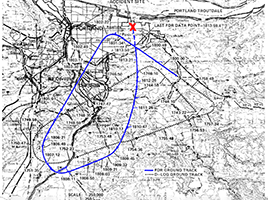
United Airlines 173
The captain was so concerned about getting everyone ready for an emergency landing that he ran the aircraft out of fuel. The crew wasn't forceful enough in letting the captain know he was about to turn the DC-8 into a glider. The next year United fully embraced CRM. And that has changed everything.
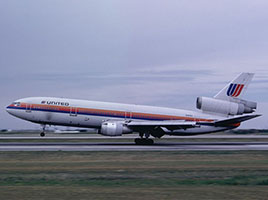
United Airlines 232
Imagine flying a heavy aircraft with no primary flight controls. This crew did everything right and saved a lot of lives in the process.
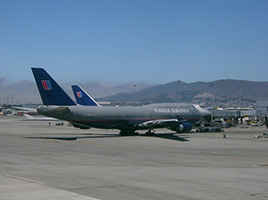
United Airlines 863
If you have to pull a throttle back during takeoff, what else needs to happen? Whenever you move an asymmetric throttle, you need to move the rudder. These highly experienced pilots forgot that.

United Airlines 1175
As pilots we are at the mercy of many people, including those that designed, built, and inspected everything on the airplane. When something goes wrong, it might not adhere to how we've been trained. These three pilots did everything right and provided a master class in Crew Resource Management and airmanship.
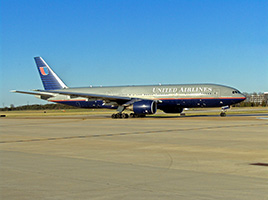
United Airlines 1722
Someone needs to be actively flying the airplane at all times. If it isn't the captain, the first officer, or the autopilot, bad things can happen. This crew came within seconds plowing into the ocean just minutes after takeoff.
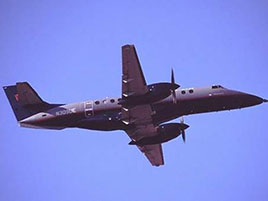
United Express 6291
Stall recovery training used to train the wrong thing: don't lose altitude. Since the procedure didn't understand the problem, neither did many pilots. This crew didn't apply all available thrust and they retracted the flaps. It is hard to imagine how they could have done worse.
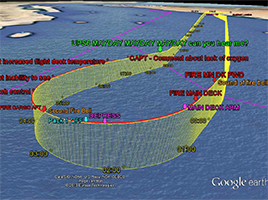
United Parcel Service 6
Thanks in large part to what happened to this UPS Boeing 747, we now give lithum-ion batteries the cautious respect deserved. The biggest lessons are to be careful when carrying these batteries and to get the airplane on the ground as soon as possible if you suspect a cabin fire.
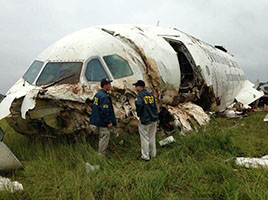
United Parcel Service 1354
We've learned to brief our approaches by looking at the FMS, since in many cases it (the FMS) will be doing the actual flying. It is critically important that the FMS is properly sequenced for the approach, or the aircraft may not be doing what you had intended.

US Air 1016
Just because the aircraft before you made it in with convective activity nearby, doesn't mean you will. But even if you press into the weather and then decide you need to go around, follow proper go around procedures. That would have saved lives in this case.
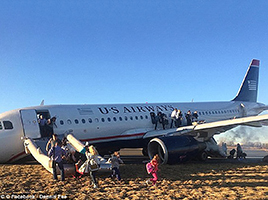
US Air 1702
The captain felt there was "no harm" in ignoring an SOP on his way to attempting to rejecting a takeoff after the aircraft was airborne. He ignored several other SOPs before that, leading to a situation which clearly caused him to panic. Along the way, a timid first officer was simply along for the ride.
V
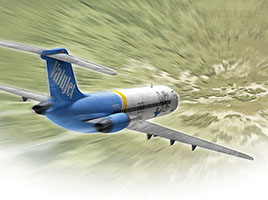
Valujet 592
There is no cause for finding fault in anything the pilots did or did not do. The circumstances doomed them to their fates. But we pilots should take a few lessons here about HAZMAT.
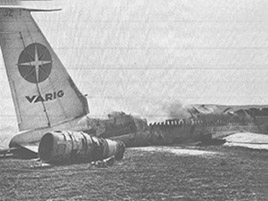
Varig 820
This accident was one of many used to remind us that if you have a cabin fire, you need to get the airplane on the ground as soon as possible.
